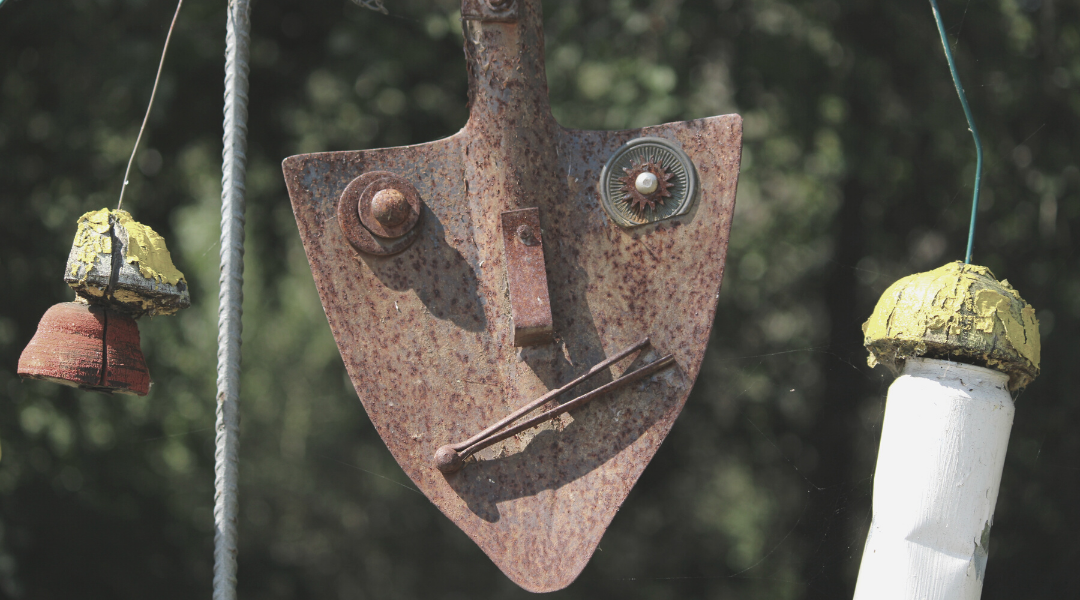An environment sculpture is an artwork that is designed to interact with its surroundings. It can be made from a variety of materials, including metal, wood, plastic, and glass. Some common themes in environmental sculpture are the natural world, pollution, and recycling.
Many environmental sculptures are designed to be functional as well as decorative, such as a bench that is also a musical instrument. That’s not all though. Let’s discover what is unique about environmental art, and explore the inspirations behind this fascinating form of sculpture.
Common themes in environmental artworks
Themes are important in art because they provide a way for artists to communicate their ideas and feelings to the viewer. In some cases, the theme may be what the artist is trying to say about the world around them.
In other cases, it may be a personal statement or feeling that the artist wants to share with others. No matter what the theme is, it provides a unifying idea that ties all of the elements of the artwork together.

The natural world in environmental art
The natural world has always been a source of inspiration for artists. The colors, shapes, and textures of plants and animals can be found in the work of many different artists, in many different styles.
Some environmental artists are specifically interested in depicting the natural world as it is. They may paint landscapes or take photographs of nature. Others are more interested in exploring the ways that nature can be interpreted or transformed. For example, they may add elements from the natural world to sculptures, or create works that are completely abstracted from reality.
Pollution and its effects on the environment
The effects of pollution on the environment have long been a concern for artists. Some of the earliest environmental artworks were created in response to the growing awareness of the dangers that pollution posed to the planet. One of the most famous environmental art examples is Christo and Jeanne-Claude’s ‘The Wrapped Reichstag’ (1995), in which they wrapped the parliament building in Berlin in silver fabric to create a temporary work of art.
Since then, many other artists have created environmental sculptures and installations that address issues such as climate change, deforestation, and water pollution. Another well-known example is Olafur Eliasson’s ‘The Weather Project‘ (2003), which used mirrors and artificial lighting to create what the artist called a ‘sun’ in London’s Tate Modern.
Recycling in environmental art
Environmental art is a growing field, and recycling is another popular theme within it. This is likely because of the increasing awareness of the need to recycle and reduce waste. Many artists use recycled materials in their work as a way to comment on the state of the environment or to show how human activity can damage nature.
Some create sculptures, while others use found objects to create installations or performance art. However, whatever form it takes, environmental art is a powerful tool for raising awareness and provoking thought about our impact on the world around us.
How do environment sculptures interact with their surroundings?
When most people think of art, they imagine paintings or sculptures that are placed in a gallery or museum setting. But what about art that is intended to be displayed in the natural world? Environmental-themed art is created to be displayed in nature and can take many different forms. Some popular sculptors that embrace the environment in their art include Andy Goldsworthy, Agnes Denes, and Nils-Udo.
One of the main goals of environmental-themed art is to create a connection between the viewer and their surroundings. To do this, the artist often uses symbolism and metaphor to communicate ideas about the environment. They may also use natural materials to create pieces that are meant to be temporary or ephemeral. By using these methods, the artist can create a work of art that is unique to their place in the world.
An environment sculpture is a sculptural work of art that interacts with its surrounding environment or geographic location. Environmental sculptures are often monumental in scale and can take many different forms depending on what is significant to the designer’s message. Examples of environmental sculptures include large-scale rock structures, driftwood installations, and even large-scale works on canvas.
In some cases, environmental art can remain a permanent fixture in areas to raises consistent awareness. For example, water pollution is a very hot topic right now due to fast fashion and it’s effects on the environment, which means water art features may be made to bring light to that, whilst also providing for the pond, sea, and river life in commercial/high-trafficked places. Due to this change, the use of a pond aeration system can be used to support the biological needs of the pond life, so that the art can make a statement without causing any issues. Ensuring that minimal impact is had, this shows that we can be a environmentally friendly world in every area.
What materials are typically used in environmental sculpture?
Materials that are typically used in environmental sculpture include metal, wood, and plastic. These materials can be used to create sculptures that resemble the natural environment or to create abstract sculptures that represent the concepts of nature and the environment.
- Metal: Recycled metal is often used to create environmental sculptures. Metal can be found almost everywhere and it is one of the most recycled materials in the world. It can be melted down and reused over and over again, so it’s a great choice for sculptures.
- Wood: Wood is a great material for creating sculptures and artwork. It has been used in this way for thousands of years, and the tradition continues today. Wood’s natural color can vary depending on what type it is, but this doesn’t matter because artists like to paint their wood sculptures with bright colors or other designs that make them stand out. Artists also often carve intricate details into their work which makes each piece unique.
- Plastic: Plastic is found in everything from clothing to electronics, and it’s a material that we’re never going to stop using. But what happens when plastic becomes waste? Can it be recycled into art? The answer is yes. Plastic just needs to go through a few steps before it can become art: first, shredding the plastic; then melting down the pieces so they are soft enough for molding; finally shaping them by pressing them together or cutting them with electric saws.

Environmental sculptures bring life and art together in new and exciting ways
Environment sculptures may be created to represent a place, time, or event. Environment sculpture can include anything from an individual statue that is part of a larger group installation to something as big as building-sized public art. The mediums vary depending on the artist and what they are trying to convey but often involve recycled materials for sustainability purposes.

